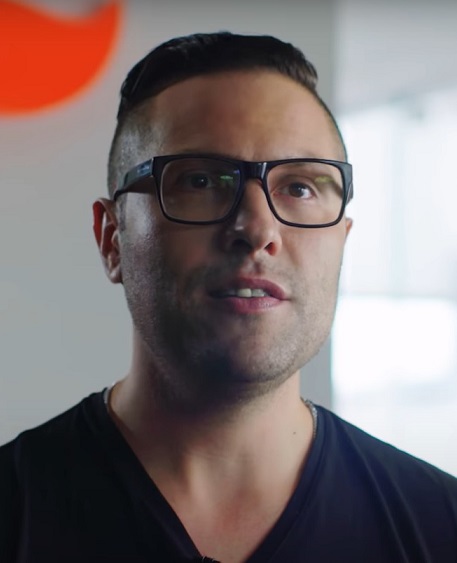To celebrate the first anniversary of Intelligent CIO Latin America, we invited 10 IT leaders from the region to talk about the main technological challenges of the coming years and discuss the successes of today such as increasing productivity and overcoming adversity.
Ricardo Guerra, CIO, Itaú Unibanco

In a dynamic world like ours, it is necessary to constantly analyze the cultural aspect of the corporate environment so that it continues to be designed entirely for the benefit of customers.
Today, even the most successful organizations must go through this process to keep evolving and remain competitive in the market.
In a scenario where technology advances at a fast pace, challenges will constantly be changing, so our professionals must be able to see how they can positively impact lives.
As the largest private bank in Latin America, we closely monitor the development of new technologies and see the process as a natural evolution of our business. However, this has never happened so quickly, making technology increasingly occupy the center of the strategy of institutions.
It is why monitoring trends has never been more crucial. We will be able to accelerate our operations and increasingly enhance our ability to develop and deliver new products and services with agility, quality and efficiency, maintaining relevance and leadership in an increasingly competitive scenario.
Heather Silston, Director of Information Systems, Coca-Cola Bottlers Puerto Rico

The main technological challenge in Puerto Rico and much of Latin America is not just in terms of technology but perhaps socio-economic and political. It requires investment in the national educational system and includes an agenda that addresses these technological changes.
In Puerto Rico, we still rely heavily on manual labor. However, we need further advances in process automation to keep our processes efficient at affordable prices.
The profile of employees will change from manual work without the need for technological knowledge to an activity that will require knowledge of systems. It holds other implications and impacts as it requires a more sophisticated workforce and a more robust education system to prepare this new workforce.
The biggest challenge we will have is to create programs to train our current employees to implement and work with the new technologies in the coming years.
Eduardo Spitzner, CIO, Buschle & Lepper

There are many opportunities to implement technological solutions caused or accelerated by the COVID-19 pandemic. The adoption or evolution of Artificial Intelligence (AI), process automation, data analysis and mobility have been increasingly recognized as strategic differentiators by companies. The challenge now is to follow trends with efficiency and agility.
In addition, introducing solutions to enable work during the pandemic allowed IT to respond to immediate demand but created many security breaches. Cybersecurity-related work and projects are piling up and need special attention.
To respond to new demands, difficulties and threats, IT must look for new ways to make solutions viable. A trend that should increasingly gain importance and visibility will be the adoption of no-code and low-code solutions.
Just as some professionals learned to work with spreadsheets some years ago, they will now be able to create robots and simple applications to help them in their day-to-day demands. CIOs will be essential in the cultural transformation and in preparing the technological, knowledge and secure base that this trend will require.
Germán Garay, CTO, Metrotel Argentina

The COVID-19 pandemic has established a new paradigm in which connectivity and network security are strategic assets of the digital society. The need for greater bandwidth generates many investment opportunities associated with fiber optic infrastructure. The challenge will be seeing how the projects will fare in the face of the onslaught of the macroeconomy. In this context, shared schemes can be seen as an efficient option to face the challenges and opportunities of Digital Transformation.
On the other hand, this new scenario where cloud, telecommunications, application and hardware providers co-exist impacts how the corporate service is delivered.
In this sense, Metrotel, a company specializing in telecommunications in Argentina, will direct investments and associations to add value to these ‘basic supplies’ that play a fundamental role, besides promoting intelligent solutions to meet emerging demands.
Finally, seeking to be at the forefront of market demand, we will continue our work focusing on improvements related to the quality of service, offering autonomy to customers, reducing implementation time and resolving failures.
Eduardo Costa, CIO, SONDA Brazil

In challenging times like the current one, with an increasingly demanding market and looking for solutions to face adversity, it is essential to count on the support of professionals who positively differentiate the business on this journey.
Through the transition of a new profile, the CIO stopped looking only at the internal technological demands of the companies and started to attend to the business. In other words, this professional is the great orchestrator of the evolution from IT to Business Technology (BT).
In this scenario, digitalization becomes a path of no return and the companies need to reflect on the level of maturity of their IT departments to align with the business. This evolution is forcing the reinvention of CIOs who need to change internal processes and demands. It is not enough only to manage the internal demands of the day-to-day, but to continually improve to produce more and better.
The characteristics of the new CIO profile go beyond the technological and process management domain. The new CIO profile must include being a business leader, equal to the other executives from the company. This scenario directly affects what we call IT today. The name will probably change to BT, which demonstrates its integration into the main business.
Juan David Orozco, CTO, Home Capital Colombia

The inclusion of disruptive technologies such as Virtual Reality (VR), Augmented Reality (AR), Blockchain and Artificial Intelligence (AI) will allow a very substantial advance in the housing sector, positively impacting many Colombian families.
One of the biggest challenges is the Digital Transformation in all the processes of buying a home, which involves financing, notary registrations, deeds, mortgage withdrawal, etc. If these processes are slow, bureaucratic and complex, the customer experience will not be good.
Therefore, modernization of technology will be necessary for people to buy properties and have confidence in the process. It is essential to work with a focus on the customer, from the user experience, using VR and AR tools, making the process simpler, faster and safer. Using geolocation and Machine Learning, we can bring customers closer to solutions that meet their needs, but we always need to be aware of developments.
In addition, we need to understand that the industry needs to work together, respecting customer privacy and making relevant information available to them. Thus, we will be able to create a solid foundation for the advancement of true Digital Transformation. It will allow all the data collected to be studied and used creatively.
Leila Zimmermann, CIO, Johnson & Johnson MedTech Brasil

The process of Digital Transformation in the health sector will intensify in the coming years and there are critical issues to which we must respond, such as regulatory and information security.
The use of data drives the development and advancement of new medical products and solutions, which imply regulatory issues and the protection of patient information, bringing a real challenge to addressing this issue ethically and safely.
The IT arena is increasingly assuming an essential and strategic position in innovation and creation of resources beyond physical medical devices, complementing and bringing value to our solutions.
The most relevant topics in this area are the different ways of working through agile frameworks with product orientation, data science, automation and digitalization of processes as the customer experience. It is important to use Digital Transformation to drive transformation in all the health systems, benefiting doctors and patients with the best solutions.
Finally, we have technological advances such as the use of robotics for precision surgeries, 5G technologies, the Metaverse and other emerging solutions that need to be developed and applied to meet challenges, bringing innovation and responses to the needs of the Medtech market. Therefore, the technology team must understand processes and be an essential player in contributing and generating new business models.
Alejandro Comisario, Executive VP of Engineering, Rappi Colombia

Innovation and technology must be priorities for governments. Together with science and human resources, they are essential for Colombia to progress.
We need digital education and government support to keep at the forefront of world powers. Consequently, we will be able to face the challenges of regulations that accompany technological evolution and the needs of people.
Concerning Rappi, which operates in the delivery sector, digital education is essential. I believe it should begin in schools, with young students being taught about the importance of technology in all sectors of the economy, right until they become academics.
At Rappi, our daily challenge is to improve and innovate how we collect, process and convert this data into information to continue our improvements.
Thus, the data journey remains a challenge for organizations. Currently, the flow of data generated by digitalization increases daily, so it is necessary to find the right way to transform this data into relevant information. According to Cisco’s Visual Networking Index (NIV), by the end of 2022, there will be monthly traffic of 396 exabytes of data on networks worldwide. Five years ago, it was 122 exabytes.
Sergio Chan, Corporate IT Manager, Grupo Numar, Costa Rica

The main challenge for agribusiness is to encourage the evolution of the business model to provide sustainability and convert it into a dynamic and adaptable model, focusing on understanding customers and the market.
From a technological point of view, one of the biggest challenges to sustaining this evolution in the business model remains the same as it has been for years: having timely and reliable information and generating knowledge for decision making.
In agribusiness, there is a wide range of technological opportunities. I can give the example of strengthening precision agriculture, which uses forecasting models based on data from heterogeneous sources that allow us to focus on changing weather patterns and market trends.
We can also cite the constant need for better-interconnected analysis devices in this industry.
I see that companies are increasingly dependent on technology. The behavior of this trend is exponential. We are producing more and more data, and at the same time, we need to generate and translate this volume of information into knowledge.
In this environment of volatility and uncertainty, the challenge for the CIO is to help establish the balance between profitability and the investment required to generate information and knowledge, always ensuring the continuity and development of the business.
André Sousa Ferreira, CIO, Stellantis South America

I believe that, for the years to come, the CIO needs to remain relevant to the business and not just a professional who looks after the IT infrastructure.
The CIO needs to work in connection with all business areas of the company.
Another point to be discussed is that industries, especially in Latin America, continually suffer in terms of competitiveness. For the CIO, this is a challenge where they need to innovate and continue their cost optimization. I give the example of the automotive industry, which is characterized by this, and the IT team ends up suffering this pressure.
The team is an enabler of business performance, but simultaneously, it also needs to deliver efficiency and innovation with costs under control.
However, I believe attracting and retaining talent who can drive Digital Transformation in the business is perhaps the biggest challenge for CIOs. The technology professional is now much more attracted to a natively digital environment. We need to show these talents that although we are in the automotive industry, we have an extremely challenging environment when it comes to technology.
Click below to share this article

